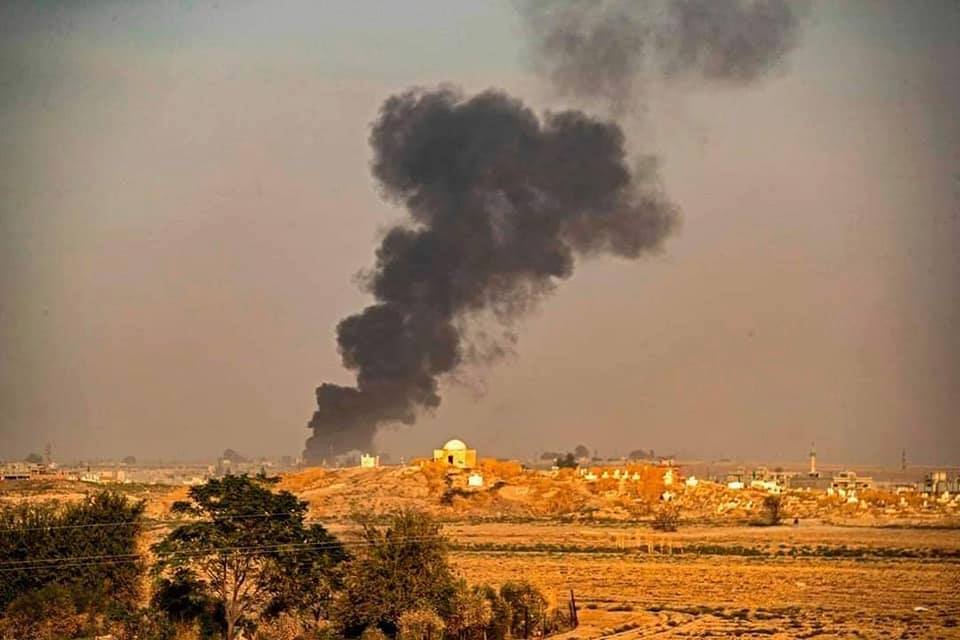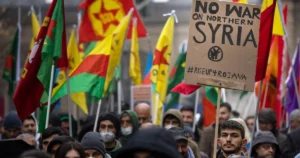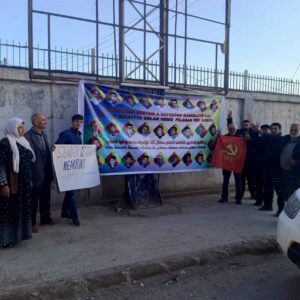In recent weeks, there have been repeated and sometimes fierce battles in the eastern Syrian region of Deir ez-Zor between units of the Assad regime and its allies and the Syrian Democratic Forces (SDF). In addition to heavy artillery attacks by the Syrian army on houses used exclusively by civilians, in which at least 14 people have been killed since August 7, there has also been a renewed attempt at a ground offensive involving an estimated 400 fighters. Just as in a similar attempt to attack the self-administration across the Euphrates, which failed last year at the beginning of September, the revolutionary forces were able to quickly repel the invasion this time too. But what is this renewed escalation all about? And why do tensions flare up so often in Deir ez-Zor in particular?
The Deir ez Zor region
Before the start of the civil war, the governorate of Deir ez-Zor consisted of the city of Deir ez-Zor on the west side of the Euphrates and the surrounding area on both sides of the river. Thanks to the Euphrates, the region is one of the most fertile in Syria and is also very rich in oil. Two factors that make it highly strategically relevant. Today, the governorate is divided into two parts; while the city itself, including the entire western side of the river, is governed by the regime, the self-administration controls the eastern side. Accordingly, the newly created “region” of Deir ez-Zor consists only of the eastern part of the former governorate and is one of the four regions of the self-administration alongside Raqqa, Tabqa and Manbij that is predominantly, or in the specific case of Deir ez-Zor, almost exclusively inhabited by Arabs.
Another special characteristic of the region, which still has a profound impact on local life today, is that Deir ez-Zor is the region that has had to live under the reign of terror of Daesh (Islamic State) for the longest time. The city of Baghuz, the last bastion of IS, was only liberated by the SDF on March 23, 2019, after the terrorist militia had been wreaking havoc there for five years.
It goes without saying that the development of revolutionary structures in a region that has only been liberated for just under five years is not as advanced as in Derik or Kobane, for example, where the freedom movement has been working for over 50 years. Accordingly, self-administration is not as enthusiastically supported by broad sections of the population as in the Kurdish regions. The establishment of grassroots democratic structures is also made considerably more difficult by the still very active network of Daesh sleeper cells. These cells deliberately assassinate numerous Arab revolutionaries and local leaders who actively cooperate with the self-administration in order to prevent social progress in the region.
In addition, the severe infrastructural crisis caused by the Turkish attacks is undermining the trust of parts of the population in the self-administration. However, this phenomenon is by no means limited to Deir ez-Zor and affects the whole of North and East Syria.
Despite this, the revolutionary process is also progressing here and the longer the self-administration controls the areas, the more parts of the population are participating in the revolutionary structures in one way or another. The Rojava Information Center described the status quo in the Arab areas in 2021 as follows “Despite complaints many believe the AANES is able to offer better security, humanitarian and rights conditions than any other actor in Syria, granting it time and space to keep building its political project. If it can find a balance between maintaining these standards and introducing more regional autonomy, only another Turkish invasion has the potential to disrupt gradual progress in the Arab regions.”
Nevertheless, the Syrian regime hopes to be able to exploit the dissatisfaction and turn the population against the self-administration, particularly in Deir ez-Zor. In this way, the entire region is to be “reconquered” without major resistance. It is trying to destabilize the region through spies and agitators on the one hand, and through brute military force on the other, with the aim of bringing about such a scenario.
The attacks
On August 7, the Syrian state began its new offensive, opposed by the members of the military councils of Deir ez-Zor and Hajin. These military councils, which exist in every region of North and East Syria, belong to the SDF and are recruited from the local population. In a region like Deir ez-Zor, which as already mentioned is almost exclusively inhabited by Arabs, it is logical that the military council also consists almost exclusively of Arabs. It is extremely important to realize that the fighting in and around Deir ez-Zor was neither last year nor this year about “Kurds against Arabs”; as a matter of fact, the overwhelming majority on both sides in these battles are Arabs.
Even if the Syrian regime likes to portray it as if they were helping the Arabs oppressed by the Kurdish tyranny, this is not an ethnic conflict. This can be seen from the casualties announced by the SDF alone, all of whom are Arabs.
No, the conflict is between reactionaries and revolutionaries, that is the dividing line, not ethnicity.
During the recent fighting, it also became clear whose side the population of Deir ez-Zor itself is on. In its press release on the attacks, the SDF announced the following: “The local population, including all tribes and clans, actively participated in the resistance and response to the mercenaries’ attacks. They demonstrated their unwavering support for the SDF.” The attempt at division has failed. What remains is another war crime in the inglorious history of the Syrian regime.
“We will defend Deir ez-Zor at all costs,” assured the commander of the military council of Hajin Xebat Şiêttî. If the Syrian state continues its attacks in the coming weeks and months, the next invasion attempt will face a similar fate to the two before it.
Outlook
A few days after the attack, the SDF carried out a successful revenge operation on the west side of the Euphrates, capturing a large number of weapons and killing 20 regime forces. For now, it looks like the situation has cooled down, but it is predictable that Assad’s next attempt will not be long in coming.
The rapprochement between Syria and Turkey increases this scope considerably. In particular, it will be interesting to see how the numerous Syrian soldiers stationed in North and East Syria will be dealt with as the escalation between the self-administration and Assad continues. But against all odds, as long as the self-administration and its armed units have the population behind them, they will be able to respond to all the coming attacks with fierce resistance.




